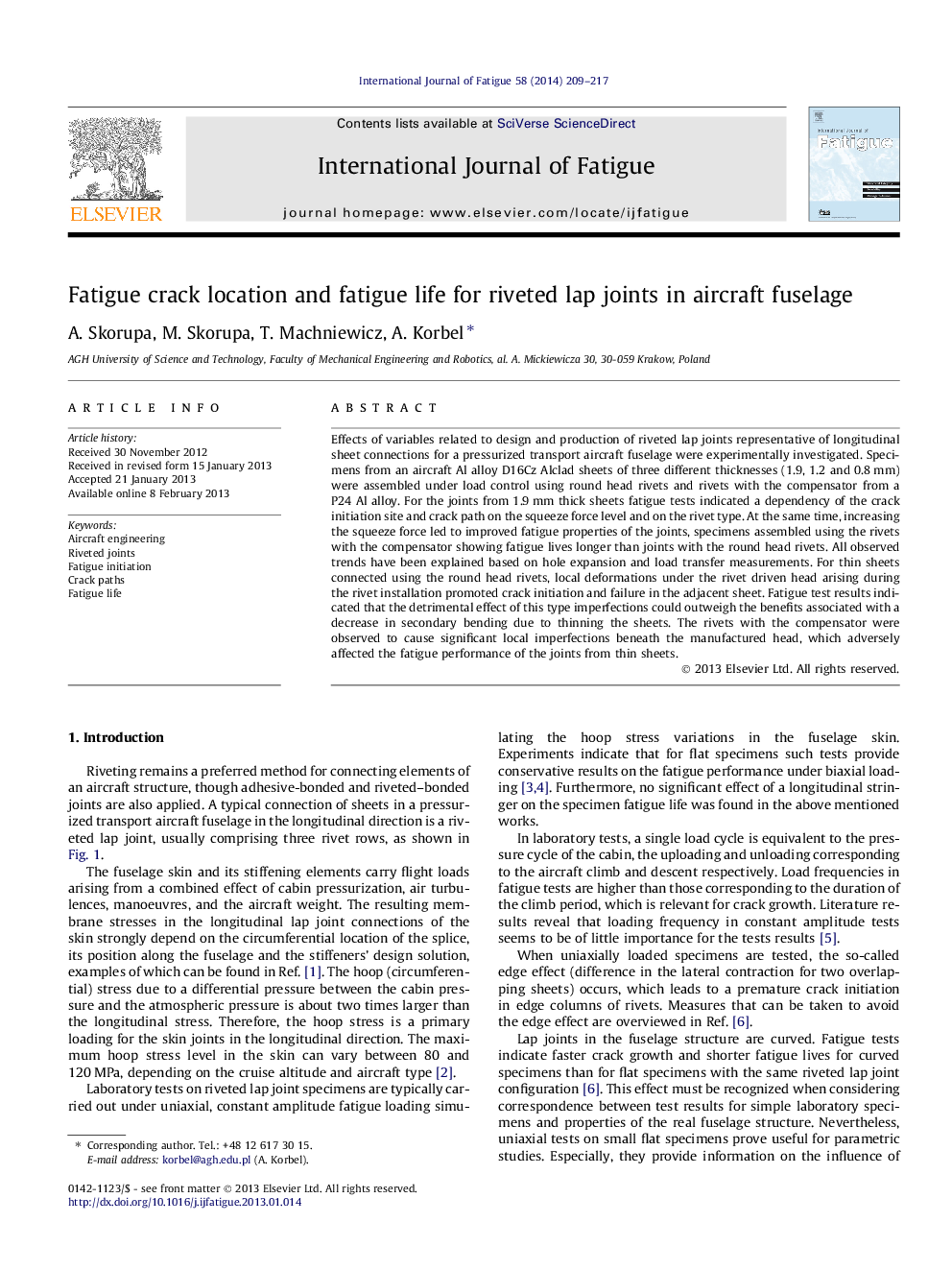| Article ID | Journal | Published Year | Pages | File Type |
|---|---|---|---|---|
| 780793 | International Journal of Fatigue | 2014 | 9 Pages |
Effects of variables related to design and production of riveted lap joints representative of longitudinal sheet connections for a pressurized transport aircraft fuselage were experimentally investigated. Specimens from an aircraft Al alloy D16Cz Alclad sheets of three different thicknesses (1.9, 1.2 and 0.8 mm) were assembled under load control using round head rivets and rivets with the compensator from a P24 Al alloy. For the joints from 1.9 mm thick sheets fatigue tests indicated a dependency of the crack initiation site and crack path on the squeeze force level and on the rivet type. At the same time, increasing the squeeze force led to improved fatigue properties of the joints, specimens assembled using the rivets with the compensator showing fatigue lives longer than joints with the round head rivets. All observed trends have been explained based on hole expansion and load transfer measurements. For thin sheets connected using the round head rivets, local deformations under the rivet driven head arising during the rivet installation promoted crack initiation and failure in the adjacent sheet. Fatigue test results indicated that the detrimental effect of this type imperfections could outweigh the benefits associated with a decrease in secondary bending due to thinning the sheets. The rivets with the compensator were observed to cause significant local imperfections beneath the manufactured head, which adversely affected the fatigue performance of the joints from thin sheets.
► Effect of design and production factors on riveted lap joint fatigue response studied experimentally. ► For thick sheets hole expansion and load transfer are behind the squeeze force impact. ► For thin sheets the joint fatigue behaviour is also affected by riveting imperfections. ► Application of rivets with the compensator is beneficial only for joints from thicker sheets.
